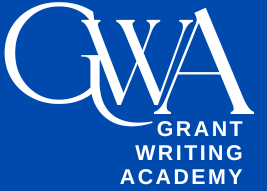Cover Page for Grant Proposal is the first impression your grant proposal makes—and as they say, you never get a second chance at a first impression.
In this post, we’ll dive deep into everything you need to know about creating a professional, compelling, and clear cover page for your grant proposal. Whether you’re a seasoned grant writer or just starting out, this guide offers practical tips, an easy-to-follow template, and a handy checklist that anyone can understand.
Why the Cover Page Matters
Imagine receiving a grant proposal that immediately looks messy, unprofessional, or difficult to navigate. Chances are, your proposal will get skimmed—or worse, tossed aside—before the reviewer even reaches the content. Studies suggest that proposals with a well-designed cover page can be up to 40% more likely to receive funding because they reflect your organization’s branding, attention to detail, and commitment to quality. A cover page is not merely an accessory; it is the gateway to your proposal’s story, conveying the essence of your mission in a snapshot.
Key benefits of a well-crafted cover page:
- Professional appearance: Establishes credibility and trust.
- Clear layout: Ensures important information is easy to find.
- Engaging design: Captures the reviewer’s attention and sets a positive tone.
- Effective branding: Aligns with your organization’s identity and messaging.
According to industry experts, using a consistent template for your cover pages can streamline your proposal process and enhance your overall success rates.
Essential Elements of a Cover Page
A strong cover page should be more than just a title—it’s a compact summary of your proposal’s key details. Here’s what to include:
data-start="2166" data-end="2198">1. Title of the Proposal
Your title should be informative and intriguing. Avoid generic titles like “Grant Proposal” and instead use something descriptive, for example:
“Innovative Community Health Initiative: A Proposal for Transformative Change”
2. Organization Information
Include your organization’s name, logo, and contact details. This reinforces your branding and helps establish trust.
- Organization Name:
- Logo: (Ensure it’s high-resolution)
- Address, Phone, Email, Website
3. Project Title and Subtitle
A compelling project title paired with a supportive subtitle can provide additional context. The title should capture the essence of your project, while the subtitle may highlight the main objective or anticipated impact.
Example:
- Project Title: “Clean Water for All”
- Subtitle: “A Community-Driven Initiative for Sustainable Access to Safe Drinking Water”
4. Date of Submission
Include the exact date your proposal is submitted. This is crucial for record-keeping and tracking application timelines.
5. Amount Requested
State the funding amount clearly. This shows that your proposal is precise and clear in its financial needs.
6. Contact Person
Identify the primary contact person for the proposal, including their title and direct contact information.
7. A Brief Tagline or Statement of Purpose
In one sentence, summarize the purpose of your proposal. This is your chance to hook the reviewer immediately.
Example:
“Empowering underserved communities through innovative, sustainable water solutions.”
By ensuring all these elements are present, your cover page becomes a snapshot of your entire proposal—professional, engaging, and clear.
Design and Formatting: Best Practices
a) Keep It Simple and Clean
Less is often more. A cluttered cover page can distract from your key message. Use ample white space to separate sections and guide the reader’s eye. Aim for a clear and concise layout with a logical hierarchy that makes information easy to digest.
b) Use a Consistent Template
Consistency is key. Using a standardized template not only speeds up the proposal process but also ensures that your proposals look uniform and professional. Choose a template that aligns with your organization’s branding guidelines, using your brand colors and fonts consistently.
c) Typography and Color
Stick to standard fonts such as Times New Roman or Arial for body text and a complementary font for headings. Limit your color palette to no more than three colors to maintain a professional look. Use your organization’s official colors for headings and accents, but avoid overusing color, which can distract from the content.
Tip:
- Heading Font: Arial, 16pt bold
- Body Font: Times New Roman, 12pt
- Accent Colors: Use sparingly to highlight key information (e.g., project title, amount requested)
d) Include Your Logo
Your logo is a crucial element of branding. Place it prominently at the top of the cover page to immediately convey your identity.
e) Visual Hierarchy
Arrange your elements in order of importance. The project title should be the most eye-catching, followed by your organization’s name and the funding amount. Use headings, subheadings, and bullet points to break up text and create a clear flow of information.
f) Proofread and Test
Before finalizing your cover page, double-check all information for accuracy. Ask a colleague to review the cover page to ensure it’s error-free and looks good both digitally and in print. Remember, even the best content can be undermined by simple typos or formatting issues.
For more detailed design guidelines and examples, check out resources from Peak Proposals.
Step-by-Step Guide to Crafting Your Cover Page
Creating a cover page for your grant proposal doesn’t have to be overwhelming. Follow these steps to build one that meets all the essential requirements:
Step 1: Gather Your Information
Before you start designing, compile all necessary details:
- Organization’s name, logo, and contact information
- Project title and subtitle
- Submission date and funding amount
- Primary contact details
Having all this information in one place makes it easier to organize your cover page effectively.
Step 2: Choose a Template
Select a template that aligns with your organization’s style. If you don’t already have one, consider creating one based on common tips from grant writing experts. Many online resources offer free templates that you can customize. Using a consistent template will help maintain a professional appearance across all proposals.
Step 3: Design Your Layout
Use your preferred design software (e.g., Microsoft Word, Google Docs, or Adobe InDesign) to set up your cover page. Arrange the elements in a logical order:
- Logo and Organization Information: At the top or in the header.
- Project Title and Subtitle: Prominently in the center.
- Tagline/Statement of Purpose: Just below the title.
- Date, Funding Amount, and Contact Details: In a clear, easy-to-find section, either at the bottom or in a sidebar.
Keep the layout clear with consistent spacing and alignment.
Step 4: Insert and Format Text
Using your chosen fonts and colors, insert the text. Make sure to:
- Use bold formatting for key words like professional, template, impact, clear, design, and success.
- Ensure that headings are larger and more prominent.
- Use bullet points or short paragraphs where appropriate to improve readability.
Step 5: Add Visual Elements
Include your logo and any other necessary graphics (such as a simple border or background pattern that reflects your branding). Avoid over-cluttering—remember, the focus is on clarity and professional presentation.
Step 6: Finalize and Proofread
Review your cover page carefully:
- Check all dates, numbers, and contact details.
- Ensure there are no typos or formatting errors.
- Print a test copy to see how it looks in physical form.
- Ask a peer or mentor for feedback.
Once you’re satisfied, save the cover page as a PDF to preserve the formatting for submission.
Common Mistakes to Avoid
Even the most talented grant writers can slip up. Here are some pitfalls to watch out for when creating your cover page:
a) Overcrowding the Page
A cluttered cover page can overwhelm the reviewer. Avoid using too many fonts, colors, or images. Stick to the essentials and maintain a clean, clear layout.
b) Missing Critical Information
Make sure your cover page includes all the necessary elements:
- Organization and contact details
- Project title and subtitle
- Submission date and amount requested
- Contact person’s information
Leaving any of these out can confuse the reviewer and undermine your proposal’s credibility.
c) Inconsistent Branding
Your cover page should reflect your organization’s brand consistently. Using different fonts, colors, or logos can make your proposal look unprofessional. Always adhere to your branding guidelines.
d) Poor Readability
Avoid overly small fonts or cramped spacing. Even if you’re trying to fit more information, readability should never be compromised. Use white space effectively to separate sections and improve the overall look.
e) Neglecting Proofreading
Spelling errors, grammatical mistakes, or formatting inconsistencies can distract the reviewer and cast doubt on your attention to detail. Always proofread—and have someone else review it too.
For more insights on common mistakes and best practices, check out Grant Central USA’s guidelines.
Examples of Effective Cover Pages
To illustrate the concepts discussed, here are two examples of effective cover page designs:
Example 1: Clean and Minimalistic Design
Header:
- Organization logo on the top left
- Organization name and contact details on the top right
Body:
- Centered project title in large, bold font:
“Clean Water for All: A Community-Driven Initiative” - Subtitle in a smaller, italicized font:
“Ensuring Sustainable Access to Safe Drinking Water in Rural Communities” - Below the title, a one-sentence tagline:
“Empowering communities through innovative, impactful solutions.”
Footer:
- Submission date and amount requested neatly aligned at the bottom
- Primary contact information listed in a small font
Example 2: Branded and Engaging Layout
Header:
- Full-width banner featuring the organization’s brand colors and logo
- Organization’s contact information overlaid on the banner
Body:
- Project title in a prominent, modern font:
“Empowering Education: Digital Literacy for the Future” - Subtitle:
“A Transformative Proposal to Bridge the Digital Divide” - A brief mission statement or tagline below the subtitle:
“Unlocking potential through innovative, measurable outcomes.”
Footer:
- Clearly displayed submission date and funding amount
- Contact person’s details in a dedicated section, ensuring ease of follow-up
These examples highlight the use of professional design, consistent branding, and a clear, engaging layout that immediately conveys the proposal’s purpose.
Checklist for Your Cover Page
Before you finalize your cover page, run through this quick checklist:
- Organization Information: Is your name, logo, and contact information included and correctly formatted?
- Project Title and Subtitle: Is the title compelling and the subtitle supportive of the overall message?
- Tagline: Do you have a clear, one-sentence statement of purpose?
- Submission Date & Funding Amount: Are these details prominently displayed?
- Primary Contact: Is the contact person’s information complete and up-to-date?
- Consistent Branding: Are your fonts, colors, and logos consistent with your organization’s branding guidelines?
- Readability: Is the text legible with appropriate spacing and font sizes?
- Visual Appeal: Is there sufficient white space and are any graphics used appropriately?
- Proofreading: Has the cover page been thoroughly checked for errors?
Using this checklist will help ensure that your cover page is both professional and effective in making a strong first impression.
Frequently Asked Questions
a) What is the primary purpose of a cover page in a grant proposal?
The cover page serves as the first point of contact between your proposal and the funder. It’s designed to quickly convey the essence of your project, your organization’s mission, and the funding amount requested. A well-crafted cover page sets the tone for the rest of the proposal and can significantly influence a reviewer’s decision to read further.
b) How detailed should the cover page be?
While the cover page should include all essential information, it should remain concise. Avoid lengthy descriptions; instead, focus on a clear presentation of key elements such as the project title, organization details, funding amount, submission date, and primary contact information.
c) Can I use a generic template for my cover page?
Using a generic template is acceptable, but it’s crucial to customize it for each proposal. Tailor your cover page to align with the specific requirements of the funder and the unique aspects of your project. This personal touch can make your proposal stand out in a crowded field.
d) How do I ensure my cover page aligns with my organization’s branding?
Review your organization’s branding guidelines before designing your cover page. Use approved fonts, colors, and logos to maintain consistency. A unified branding approach not only makes your proposal look professional but also reinforces your organization’s identity.
e) What are some common design mistakes to avoid?
Some common pitfalls include overcrowding the page, using too many fonts or colors, and neglecting white space. Always strive for a clear and simple design that enhances readability and directs the reviewer’s focus to the most important information.
Advanced Strategies: Using Data and Visuals
In today’s competitive grant landscape, incorporating data and visuals on your cover page can give you an edge. Consider adding a simple infographic or chart that summarizes key project outcomes. For example:
- Impact Metric: “Our previous initiative improved community health outcomes by 30% in just one year.”
- Graphical Element: A pie chart showing the distribution of funds in your budget can provide a quick visual summary.
Such visuals not only capture attention but also demonstrate that your proposal is grounded in evidence-based research. According to a study by PandaDoc, proposals with integrated data visuals are more likely to be remembered by reviewers.
Call-to-Action: Subscribe for More Grant Writing Insights
Creating a standout cover page is just one piece of the grant proposal puzzle. To further enhance your grant writing skills and increase your success rates, subscribe to the Grant Writing Academy Newsletter.
Our newsletter is packed with exclusive tips, strategies, templates, and tools that can help you craft winning proposals every time.
Subscribe now to gain access to:
- Detailed guides on every aspect of grant writing
- Real-world examples and case studies
- Interactive templates and checklists
- Regular updates on trends and best practices in grant funding
Don’t miss this opportunity to boost your proposal success and secure the funding your project deserves!
Conclusion
A well-designed cover page is more than just a formality—it’s a vital component of your grant proposal that sets the stage for your entire application. By incorporating a professional layout, clear branding, and engaging content, you can create a cover page that captures the attention of funders and invites them to learn more about your project.
Remember, the key elements include:
- A compelling project title and supportive subtitle
- Complete and accurate organization and contact information
- A succinct tagline that summarizes your proposal’s purpose
- Clear presentation of the funding amount and submission date
- Consistent branding and thoughtful design choices
By following the steps and tips outlined in this post, and by avoiding common mistakes, you can ensure that your cover page not only impresses reviewers but also strengthens your overall proposal.
For additional resources and expert guidance, don’t forget to subscribe to the Grant Writing Academy Newsletter. Your journey to crafting winning grant proposals starts with that first impression—and a great cover page can make all the difference.






